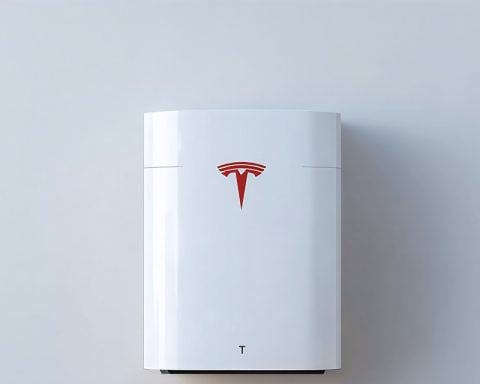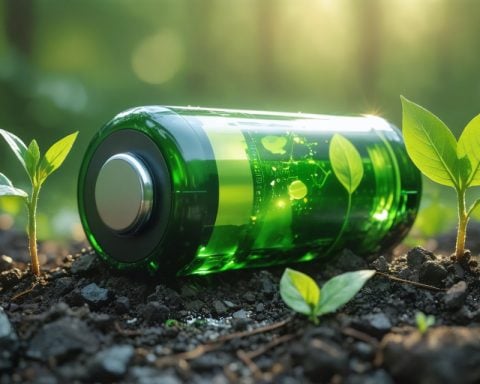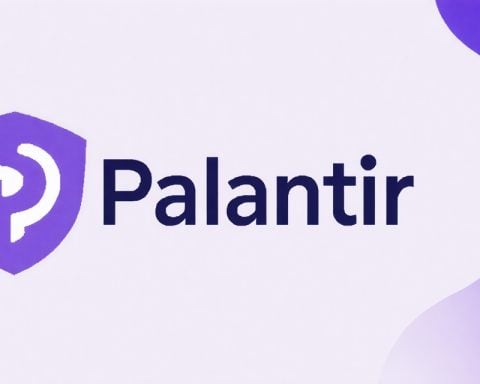- The San Gabriel River faces contamination risks from crushed lithium-ion batteries, remnants of the Eaton fire, potentially leaking toxic metals into groundwater.
- The Lario Park site near the river is identified as a major threat by the Main San Gabriel Basin Watermaster, jeopardizing the water supply for nearly two million Los Angeles County residents.
- Lithium-ion batteries contain hazardous metals like lead, nickel, and copper, which could pollute the river as the batteries degrade.
- Despite the EPA’s precautionary measures, including air monitoring, concerns remain about rain potentially spreading toxic debris into the river.
- Community members affected by the Eaton fire are actively seeking transparency and demanding protection for their water resources from further contamination.
- Ensuring the safety and purity of the water supply requires constant vigilance and proactive measures.
A formidable challenge lurks along the gentle banks of the San Gabriel River, where rainbow-hued sunsets mask an unseen danger. Crushed lithium-ion batteries, wrangled from the charred remnants of electric vehicles decimated by the Eaton fire, risk leaking toxic metals into Southern California’s precious groundwater. The Main San Gabriel Basin Watermaster has raised the alarm, pointing to the Lario Park site as a hazardous cradle just inches from a vital waterway. For nearly two million thirsty residents of Los Angeles County, the stakes couldn’t be higher.
Lithium-ion batteries, those powerful luminaries of our digital and electric age, double as harbingers of potential catastrophe when mishandled. As they succumb to crushing, they may release a noxious cocktail of metals—lead, nickel, copper, to name a few—that could stealthily seep into the river. The San Gabriel River, glistening under the Californian sun, carries rainwater and snowmelt, like arteries feeding the body, to its ever-thirsty populace.
From a bustling waste staging site, the EPA has promised precautions, but skeptics abound. Air monitors float like ever-alert guards, yet the Watermaster remains uneasy. Would the rain swipe away toxic debris into the innocent river below?
As community members reeling from the devastating Eaton fire gather in town halls, their voices rise above the din, demanding answers, transparency, safety. Mistrust lingers in the air, as heavy as the humidity before a storm. Their rallying cry is simple: safeguard our waters before they whisper the woes of contamination.
In a dance between technology and nature, our triumph shall rely on vigilance—listening before the waters speak ill of our negligence.
Could Toxic Battery Waste Be Endangering Southern California’s Water Supply?
Real-World Use Cases and Industry Trends
The incident along the San Gabriel River highlights a growing concern: the environmental impact of lithium-ion batteries, particularly when associated with electric vehicles (EVs). As cities move towards greener transportation options, the disposal and recycling of EV batteries become critical for sustainability. Globally, the lithium-ion battery market for EVs is forecasted to grow significantly, potentially reaching $129.3 billion by 2027 according to Fortune Business Insights. This growth underscores the need for robust recycling and disposal facilities, coupled with strict environmental regulations.
Controversies & Limitations
A primary controversy with lithium-ion batteries is their high potential for pollution if not properly managed. These batteries contain hazardous materials like lithium, cobalt, nickel, and manganese, which can potentially contaminate soil and water sources. In the case of the San Gabriel River, there is concern regarding the adequacy of safety measures to prevent leaching of toxic metals into groundwater.
The limitations in foresight and proactive environmental regulation often exacerbate these issues. Inadequate recycling infrastructure and a lack of universal standards for battery disposal contribute to environmental risks, as seen in Southern California.
Security & Sustainability
Current security measures like those promised by the EPA at waste sites, such as air monitoring, must be complemented by comprehensive waste collection and treatment systems. Sustainable solutions could include:
– Developing new recycling technologies that recover more metals with higher efficiency.
– Designing batteries with less toxic components.
– Improving battery life and encouraging reuse to reduce total waste.
To adopt these practices, strategic investment and cooperation between public and private sectors are essential.
Pros & Cons Overview
Pros:
– Efficient energy storage and discharge for devices and vehicles.
– Reduced greenhouse gas emissions when used in EVs compared to traditional vehicles.
Cons:
– Risk of environmental pollution if improperly disposed of.
– High initial costs for setting up comprehensive recycling systems.
Insights & Predictions
Industry experts predict increased regulation and innovation in battery recycling as the EV market expands. Companies are likely to invest in developing solid-state batteries, which promise less environmental impact and greater safety through reduced leakage of harmful materials.
Actionable Recommendations
For residents and policymakers in Southern California and similar areas, the following steps are recommended to safeguard water resources:
1. Advocate for stricter regulations on battery disposal at local and state levels.
2. Support and invest in local recycling facilities specializing in lithium-ion batteries.
3. Sponsor community awareness programs about proper battery disposal.
For more insights and industry updates, visit the EPA website and stay informed about environmental regulations and safety protocols.
In conclusion, vigilance and prompt action are imperative to mitigate the environmental risks posed by lithium-ion batteries, ensuring clean water resources for future generations.














